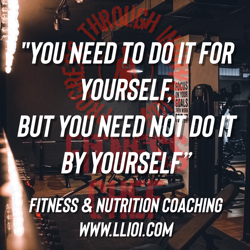WORKOUT NUTRITION: Nutrition and supplements in support of physical activity
A very often asked question is, “What to eat while or after working out?” And it is a good one because you should take physical activity into account in your nutrition. For an easy-going person who is physically active just to feel good and doesn’t work out intensely or with a purpose, this chapter is useless. If this is the case, you don’t have to worry about those details, since they won’t make a big difference. But if you’re after maximal benefits and results, you should pay attention. Let’s go over nutrition through different exercise categories.
Low-intensity aerobic and body weight resistance exercises don’t need special nutrition because they hardly use any energy. In those cases, when you feel unenergized or your weight is dropping too fast, you should just increase the daily calories.
Exercise nutrition comes into play when your workout intensity and duration raises. First of all, some core principles:
The higher intensity, the more carbs your body uses as fuel and needs as a replacement from food.
The more you signal your body to grow, the more protein it needs for this. Our diet has enough protein to begin with, so this is not the issue.
Higher intensity and strength training have so-called “anabolic window” for 1-2 hours after the workout. This means that the body will use protein and carbs from food more effectively than usual. The muscle repairing mechanisms work better when macronutrients are used in this time window, but only slightly better. This is when carbohydrate goes mostly to replenish the glycogen stores in muscles, not for fuel.
For an average person with a moderate workout, you don’t need to eat or “preload” before the training. It is smart to eat before longer and more demanding workouts or events. Or just when you feel better eating before workout. Most people feel better eating after.
This table is a very rough estimate to give you some kind of starting point to start your testing. Don’t take this as an exact formula.
What foods should you eat?
Proteins: High-quality protein such as fish, meat, dairy products, egg, soy, or protein products (like protein powder or bars).
Carbohydrate: The more intense the workout, the faster absorbing carbohydrates are needed. The best are - fruits, sweet berries, good sports drinks, protein products with sugar inside, and milk. Also whole grain products (oat bread for an example), and medium-fast carbohydrates from vegetables (sweet potato for an example) might be a good option.
Should you use pre-workout/workout supplements? If you aren’t a professional athlete, then pre-workout and workout supplements are more of a hype than actual benefit. Most of the pre-workout and workout supplements are based on the effect of caffeine. And you shouldn’t need a caffeine high to have a productive workout. One the other hand - many people like the focus they get from the pre-workout - so test and find out for yourself.
As for other nutrients - there is also the water and mineral part of the equation. This also isn’t an exact science. The more you sweat, the more minerals you want to replenish. Mineral water and sport drinks are best for this. The most important principle here is that you should drink before you get thirsty. When you get thirsty, you’ve already lost a good portion of your water and mineral reserves and your body doesn’t function at full strength. That’s why you should be drinking throughout the workout.
A question often asked about exercise nutrition is: should you use supplements? The first answer is that you will manage fine without any special supplements and not many of us will ever be training hard enough to benefit from those. There are two supplements, though, that can help even the regular exerciser.
1. Creatine is the fast energy source for muscle cells. Thus, it is a good supplement for high intensity and strength workouts. It has been proven to boost strength indicators for all ages, genders, and people of all different shapes. It doesn’t help if you are doing only low-intensity exercises. Creatine monohydrate is the most used form in the supplement, but it causes bloating and water retention. That’s why you should seek out a more expensive but much better quality alternatives.
2. L-carnitine (acetyl-l-carnitine, to be precise). It is the compound that normally transfers fatty acids to be “burnt” in the mitochondria. Supplementing with l-carnitine can boost this process. It forces more fatty acids from the blood to muscle cells. It has been proven to work for almost all people when it comes to burning fat. Granted that they were losing weight. It won’t do anything for the person, who isn’t losing weight or working out.
This was a short review of exercise nutrition. The main takeaways were:
Adding carbs (not fat or protein) is the only thing that you need to worry about in your diet concerning workout nutrition.
The best time for most people to eat for maximal benefit is right after workout in the 1h (max 2h) window. Everyone and every case is different. No universal rules - you have to test and see what works for you.

